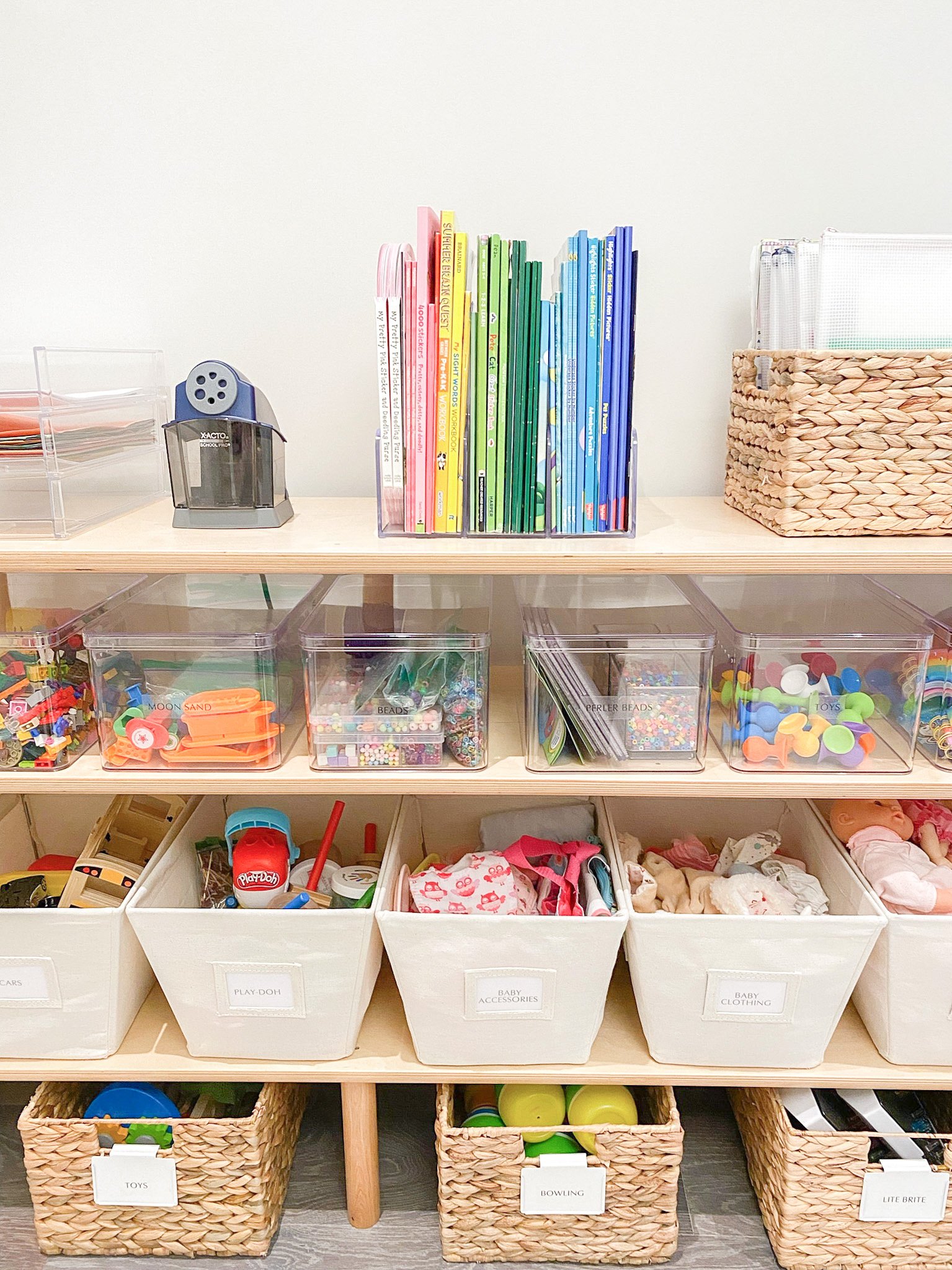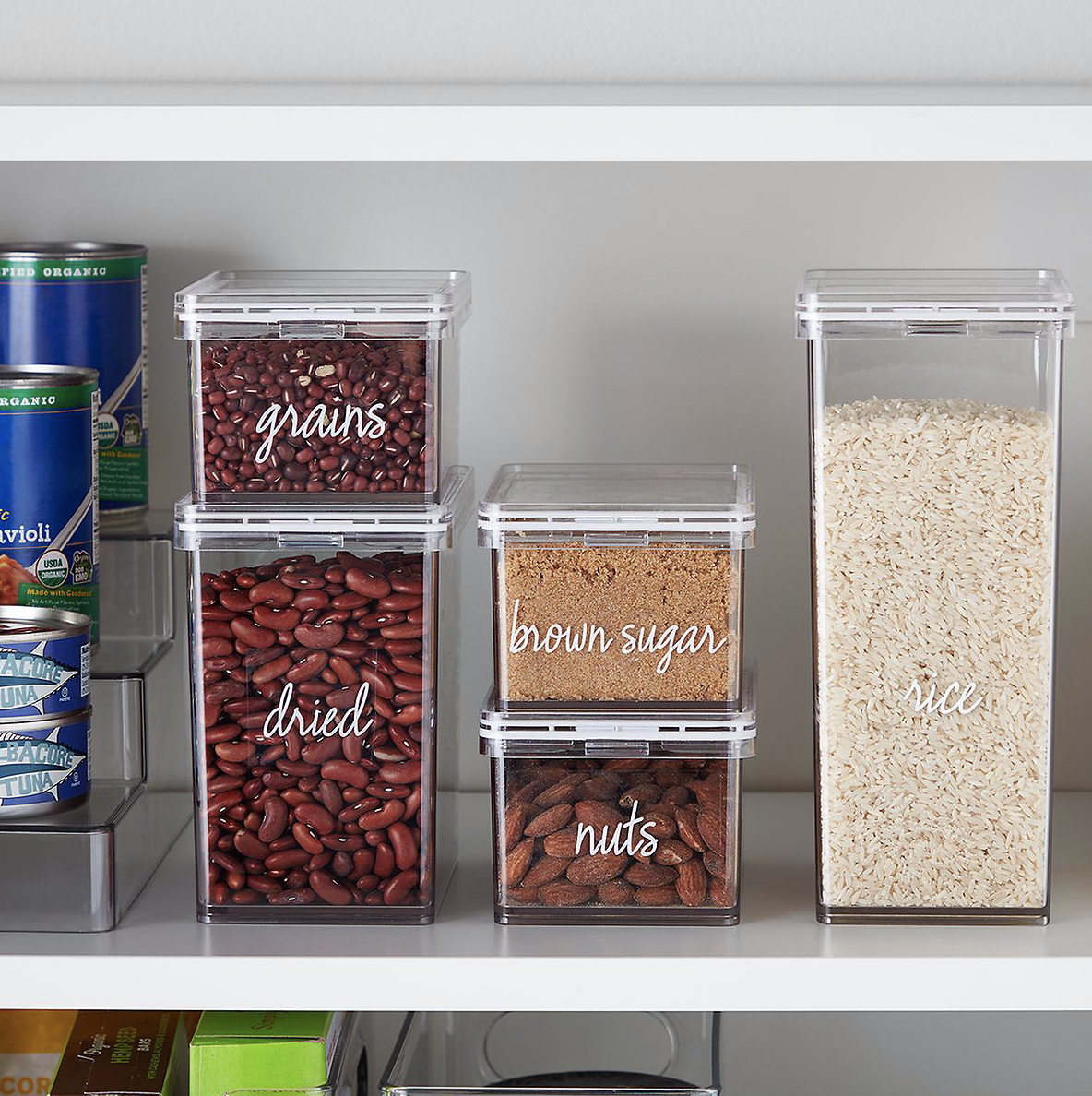Kids’ Spaces Organization 101
Organizing your kids’ spaces goes far beyond simply preserving your sanity; it can also greatly benefit your children’s wellbeing. Having systems and structure can do wonders for a child's understanding of how to find things & put them back, and it also creates a healthy sense of pride and ownership over their belongings. Forming these habits at an early age increases the likelihood that your child will care for and respect their things, and will also teach them the benefits of structure and systems. By following our 5-step method to organizing, you can transform any kids' space in your home too!
Remove all contents from the space
It may seem a bit tedious at first, but taking the time to pull every item out of a toy-filled area is the most efficient way to properly organize your child's items.
Categorize play items
Once you’ve pulled everything out of the many nooks and crannies of your kids’ spaces, you can begin to identify the larger categories that make up its inventory and sort through their items, grouping like-items together. This step will require you to create categories that are unique to your kids’ specific routines, but here are some general categories we often work with:
Stuffed animals
Dolls
Figurines
Books
Puzzles and board games
Coloring and art supplies
Building blocks
Cars, trains, and planes
Dress-up items and costumes
Bulky toys and sets
Discard & donate: Purging with Kids
Include the kids in deciding what to keep, discard, or donate. Believe it or not, parents can often look at their kids’ play items with greater sentimental attachment than kids! Kids know what they like and have interest in, and can easily identify the toys they’ve outgrown. If your kiddos are having a hard time with letting go, this is the perfect opportunity for kids to learn the importance of giving to people who have less. To teach them this, explain that anything they donate will go to a child who doesn’t have other toys to play with and would really love them.
A few ways to approach purging conversations with your kids:
Which toys do you no longer play with?
What do you think about giving this to someone who may not have as many toys and would really love it?
If you keep this toy, are you okay with getting rid of another one?
If you let go of your broken toys, you might get a new one to replace it!
If your playroom is full, there won’t be room for any new toys.
Add organizational systems
Once you have decided what stays and what goes, it’s time to decide where each item will live, or where its home will be. This is where structure really allows you to easily maintain organization. Having items grouped and placed in a designated area makes cleanup time a cinch!
Here are our jeneral guidelines for placement in kids’ spaces:
ON SHELVES
Books
Board games
Puzzles
Dollhouses
Display dolls
Bulky toys
IN DRAWERS
Coloring utensils
Scissors
Stickers
Glue
Paint
Beads
Glitter
IN TALL BASKETS
Stuffed animals
Larger toys
Balls
IN BASKETS AND BINS
Legos
Small dolls
Play-Doh
Train tracks
Here are our favorite products to use in the play area:
BASKETS
BINS/CONTAINERS
DRAWERS
ADDITIONAL STORAGE
BIN CLIPS/LABEL MAKER
Maintain: Engaging Kids in Cleanup
With this new system of organization, where kids can tangibly see structure in their space, it becomes much easier to include them in the cleanup or maintenance process. When every item has a home, with a designated space and labels, putting things away just makes sense. This teaches children ownership and responsibility, while also empowering them to take control and care of their belongings. If it’s not as easy as it sounds to engage your kids in cleanup, try adding some music, games, or incentives into the mix! And remember, this process doesn’t have to be (and probably never will be) perfect—it’s practicing the habit that matters.
For tips, tricks, product picks, and inspiration for home organization, make sure you grab your copy of Life in Jeneral if you haven’t yet and sign up for the LIJ Book Club! There’s a 70 page workbook with exercises to help you work through your emotional barriers and goals in relation to organizing, and of course, step-by-step guidance to do the work. For even more support and encouragement, follow along with the book club on our Instagram, too!






























